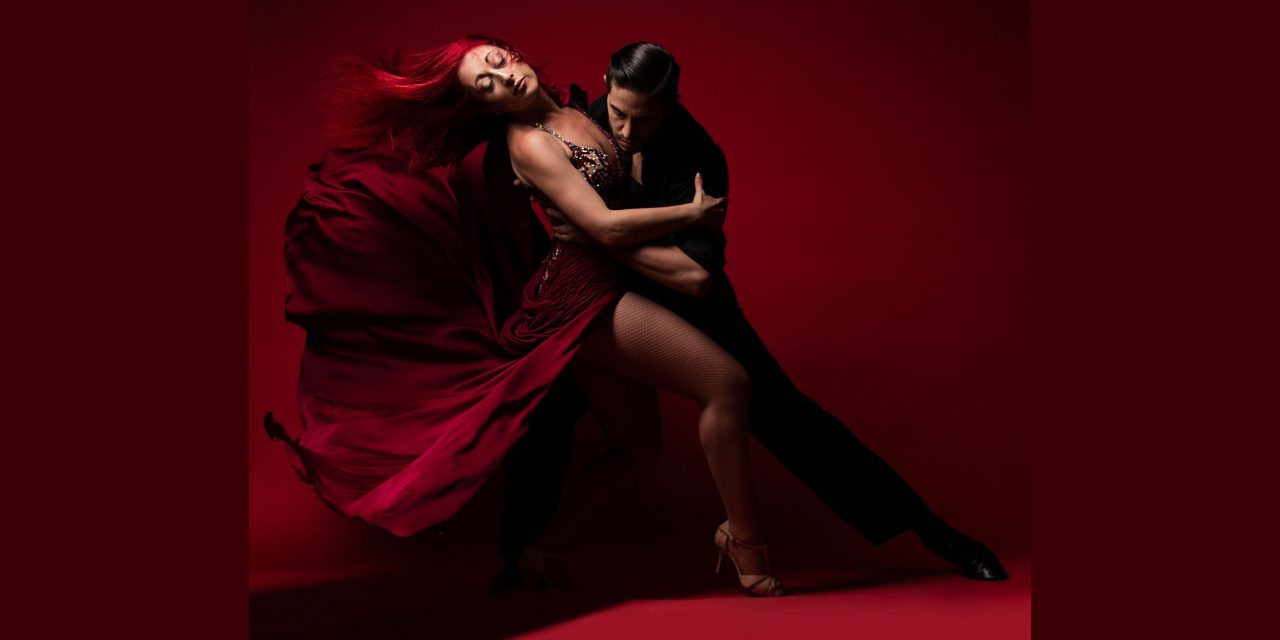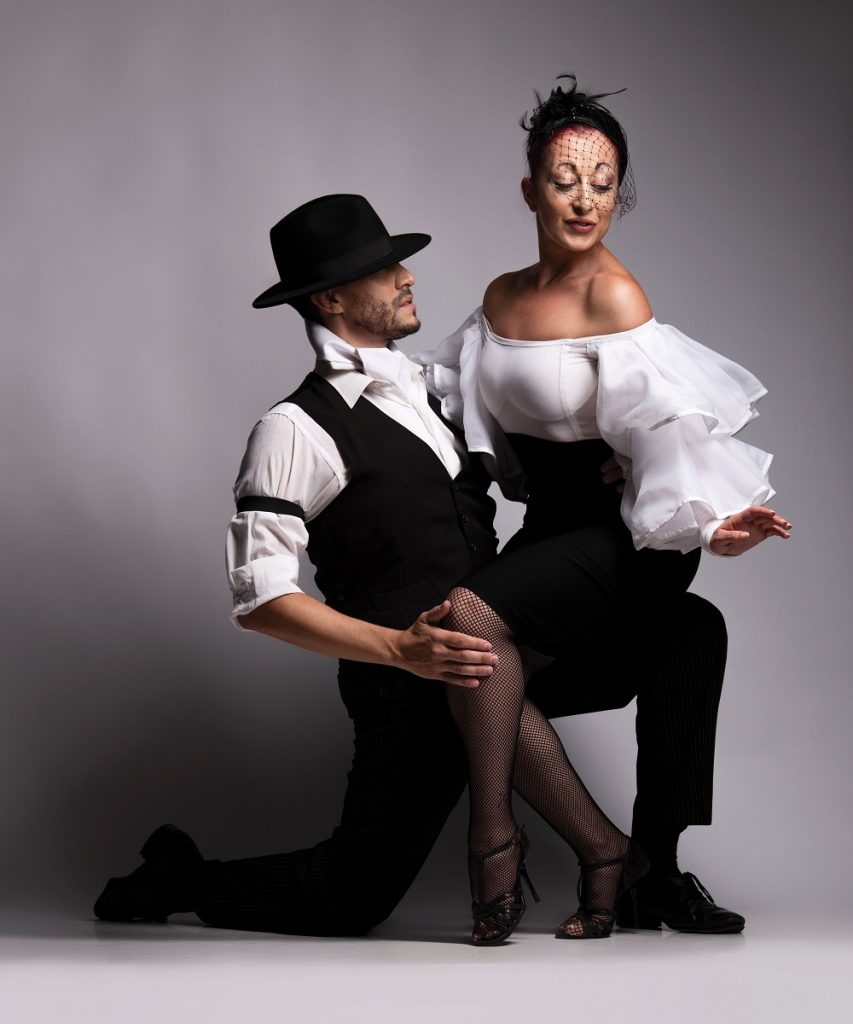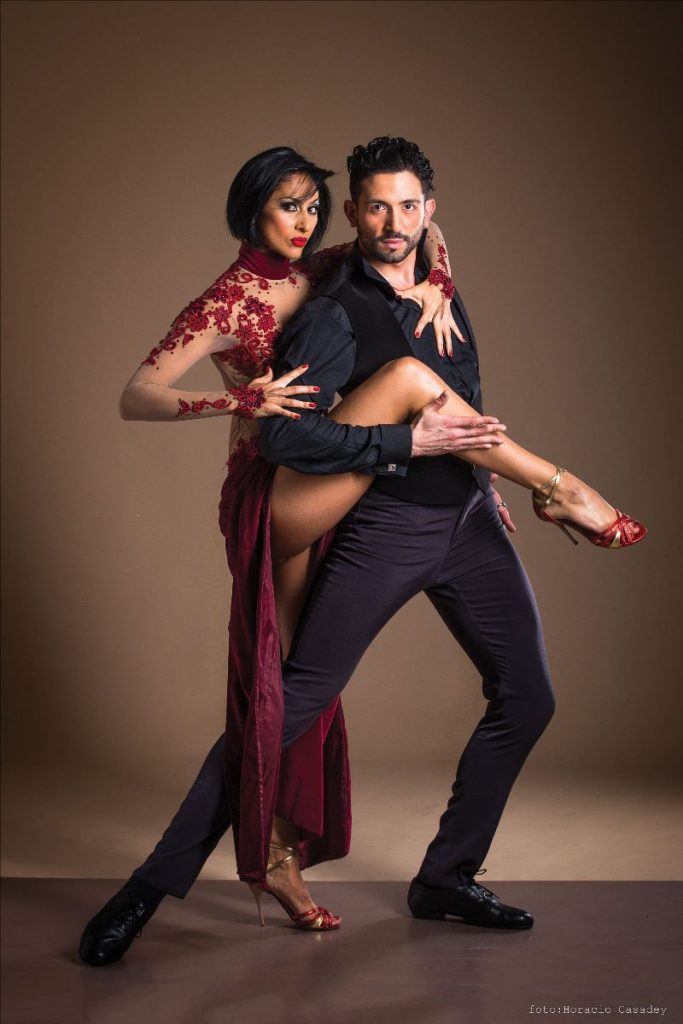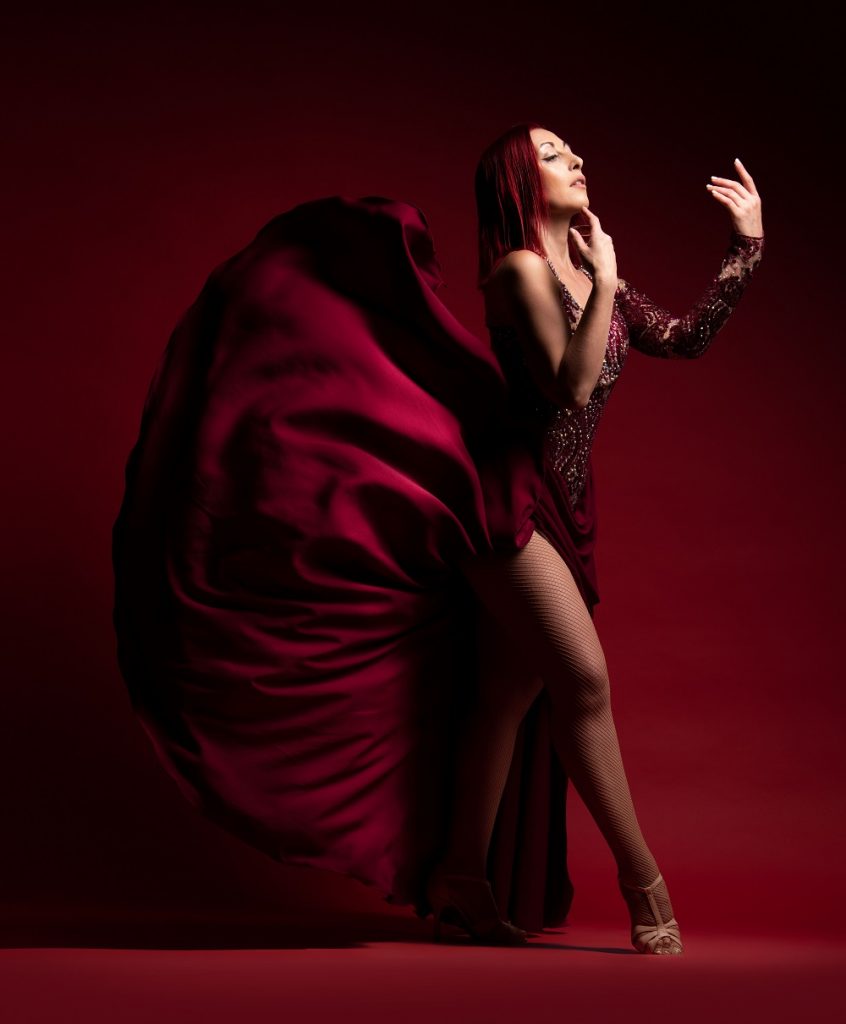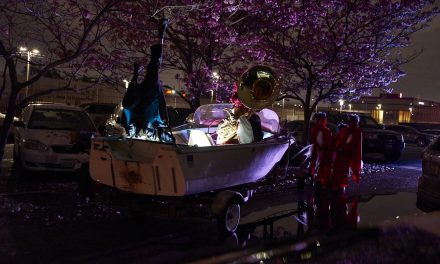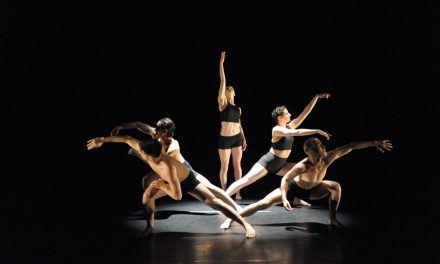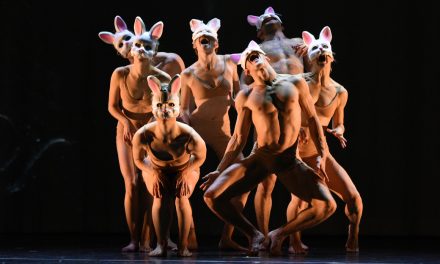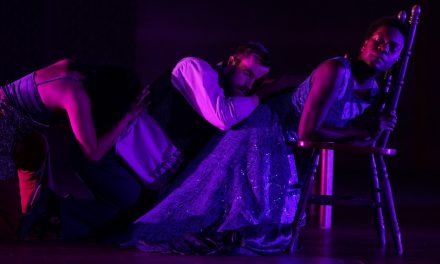On January 16, 2022 at 2:00pm, The Renée and Henry Segerstrom Concert Hall welcomed Tango Argentina to an expectant audience of dance and music lovers. The unpredictable 20/21 Season primed the devotees hungering for the passion and excitement of this sultry legacy derived from Argentina and Uruguay.
Sunday began a bit delayed and was not clear if there had been some last minute adjustments. There appeared to be a change in the program replacing Tomás Galvan & Gimena Herrera with Andres Bravo and Sarita Apel. Bravo and Apel were, however, excellent additions. And soon the audience, masked and vaxed, made their way into the performance hall. Patrons strolled to seats, silenced their phones, excited chatter welcomed once sequestered neighbor patrons and eventually all muted themselves in expectation of the passion and heat of GD Tango and Fabrizio Mocata Quartet, aka Tango Argentina.
Historically Tango is urban folkloric, originated in the barrios of Buenos Aires. It developed from the Argentinian and Uruguayan mix of Criollo (Gaucho/Natives from the countryside), African and European immigrants and thrived in the impacted city of Buenos Aires in the early 20th Century.
With this brief history, Tango Argentina began with an original piece, Sultango/El Cholo, composed by the Sicilian born, Fabrizio Mocata. His piano talents, direction and compositions, combined with the musicians Diana Seitz (violin), Moshe Shulman (Bandoneon player), and Dominic Martinez (bassist) clearly set the mood and pulse of the afternoon.
Soon we were transported and introduced to the personalities, styles and expertise of each of the four couples; Guillermo de Fazio & Giovanna Dan, the tall elegant co-directors and choreographers of Tango Argentina; Marcos Pereira & Florencia Borgnia, lyrical, effortless; Andres Bravo and Sarita Apel, spirited and technical; and Paloma Berrios & Maximiliano Alvarado’s fiery control and perfection. They, with their Cruzadas, Ganchos, and Ochos, glide effortlessly, creating designs of circles, angles, squares so reminiscent of folklórico. Finally, live and in person, we are reminded of living in a beautiful world of color, radiance, music and dance.
Seamlessly moving from one piece to the next, not a moment was wasted. The performance was well paced and designed, allowing for romantic interludes, engaging good-humoured Milongas, light spoofs encouraged by de Fazio and animating the audience with a moment to chuckle, traditional, improvised and unique Tango choreography, elegant waltzes and as is the tradition of Tango, the men took a moment to partner each other. This lead to an engaging 20’s Charleston by the female dancers joined by their partners to end the First Act with a Family Portrait gathering of the company of dancers.
There were a number of highlights that are worth mentioning: The elegant suits, gorgeous and colorful gowns with complimentary hues, flowing kick pleats, rich and vibrant sequins and bead-work all went uncredited, yet should definitely be mentioned as a highlight.
Andres Bravo and Sarita Apel showed their expertise when Apel did an incredible promenade on one leg equal to the prowess of any ballerina. Her form and Bravo’s partnering were exquisite and woke the audience to the wonderful, strong and sustained work of this couple.
And into the second act, a medley of the great Carlos Gardel created a nostalgic reminder of this beloved giant of Tango.
Santiago born Maximiliano Alvarado and Paloma Berrios Rodriguez’s stunning moment was when the spirited couple did a tour de force piece in the second act. The brilliant clean footwork, musicality and style was so dynamic it insisted on major applause from tango lovers and novices alike.
Giovanna Dan contributed a memorable piece, Malambo Y Boleadoras, composed by Mr. Mocato. She used Bolas which are traditionally stone balls attached to rope ends and were used as weaponry or by Argentinians/Uruguayan Gauchos to hunt and catch cattle. Dressed in a severe black body suit and tight leather boots, Dan was stunning to watch, exciting the audience’s unsolicited cheers using the Bolas to create rhythms and dynamics, techniques usually left to the male set (Gauchos).
While in the Second Act the great Piazzolla’s “Muerte del Angel,” and “Libertango” added his genius spirit and brought resolution to amazing discords and driving rhythms to wed with the dancers’ musicality. Depiction of loves and losses, romance and goodbyes were elegant, formal and nostalgic in black and white.
And to end a wonderful afternoon were the strains of La Cumparsita, familiar to all. It managed to finalize nearly two hours of romance and artistry, lifting the audience out of the mundane and out of their seats, if only for one special moment in time. Thanks to Tango Argentina and the Renée and Henry Segerstrom Concert Hall for your commitment to make art and artistry accessible. It was a much appreciated experience.
# # # #
To learn more about GD Tango, please visit their website.
To learn more about The Segerstrom Center for the Arts, please visit their website.
Written by Joanne DiVito for LA Dance Chronicle.
Featured image: Tango Argentina – Ivana Ayala and Pedro Sanchiz – Photo Courtesy of The Segerstrom Center for the Arts

